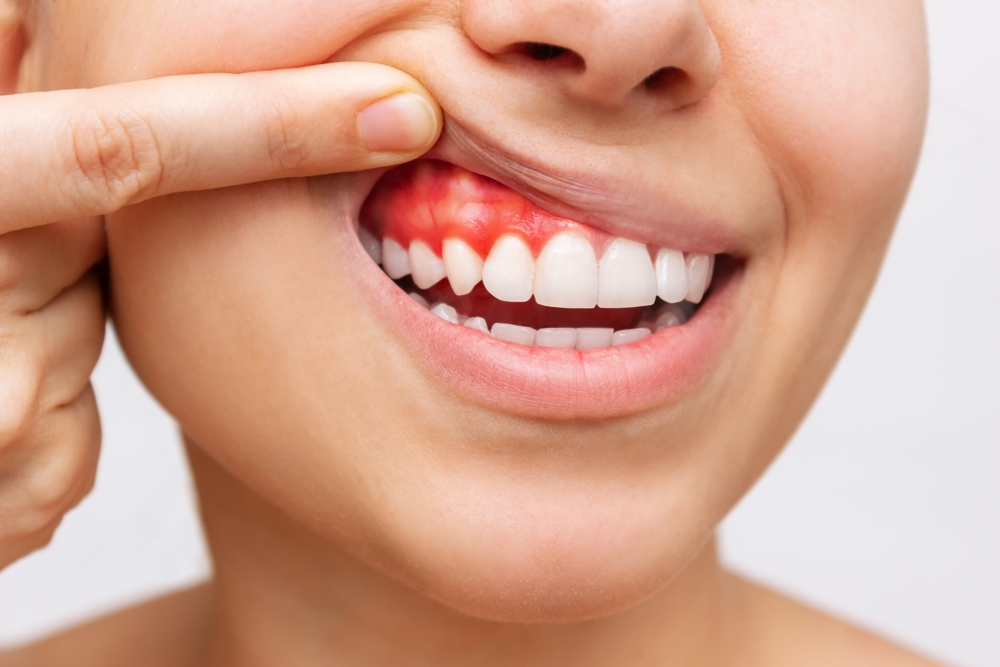
Dental lasers are a proven treatment option for periodontal disease and offer the following benefits to patients:
- Thorough periodontal pocket cleaning
- Precision targeting for safer treatment
- Reduced bleeding and pain
- Faster recovery time
- Reduced risk of infection
With its excellent range of benefits, laser periodontal treatments are a popular choice for patients and a popular addition to dental practices. Meyerland Family Dentistry also offers laser dentistry, including periodontal procedures that can treat gum disease and improve the health of your teeth.
Four Reasons Patients Prefer Laser Periodontal Dentistry
Laser dentistry is quickly becoming the preferred option for many patients. Much of this is due to the practitioner side, as dental lasers have become more effective and less expensive with time. Laser dentistry offers several benefits that every patient can appreciate, including:
Less pain
Patients report significantly less pain during a laser dental treatment compared to treatment administered with metal tools. For some procedures, lasers may reduce – or remove – the need for anesthesia. In general, the duration of pain is also reduced with laser dentistry.
Less bleeding
Dental lasers cauterize periodontal tissues as they shape them, sealing off blood vessels in the process. The result is minimal bleeding in the gum tissue and other soft tissues in the mouth.
Reduced risk of infection
Laser dentistry is associated with a lower risk of infection. This is likely due to reduced bleeding and the use of disposable laser instrument tips. Dental lasers also destroy bacteria that cause mouth infections, reducing their prevalence near the treatment site.
Shorter recovery time
With all of the above, patients generally enjoy a much shorter recovery period following treatment. In fact, many people can resume normal activities within 24 hours, which allows for a faster return to work and other important daily tasks. In general, patients experience less pain and swelling following a laser dentistry procedure, and the healing process tends to be quicker as well.
With the above perks, it’s easy to see why laser dentistry is becoming the preferred option for patients. This is also true among younger patients as dental lasers are safe for children and can remove the principal drivers of dental anxiety. For families who dread going to the dentist, laser dentistry can make the process much more tolerable.
How Are Dental Lasers Used to Treat Periodontal Disease?
Laser periodontal treatment is a non-invasive alternative to surgery and is performed using an Er:YAG or Nd:YAG laser. Here Is what the process looks like:
- Gross debridement – Before the dental laser is used, the area around the diseased periodontal pocket is debrided. During debridement plaque and calculus deposits are removed using an ultrasonic scaler. Once this initial step is complete, the pocket can be safely accessed.
- Epithelial removal – With the treatment area now accessible the laser probe is lowered into the periodontal pocket and used to remove the top diseased layer of the periodontal epithelial. This is the layer of soft tissue lining the inside the pocket. By removing this diseased layer of tissue with a dental laser, the treatment site will recover faster.
- Calculus removal – The laser probe is then used to eradicate the layer of calculus clinging to the cementum in the tooth’s root. During this stage of the process, the laser also disinfects the root and removes the presence of endotoxins and bacteria that can interfere with tissue healing.
- Light scaling – Once the laser probe has cleared the root of any calculus, a fine scaling probe is inserted into the pocket and used to remove any calculus that remains. In most cases, the remaining calculus comes right off after exposure to the dental laser.
- Endodontic probing – One last probe, an endodontic probe, is inserted into the pocket and verifies that no calculus remains. If additional calculus is detected, the laser probe is used to sweep the periodontal pocket again.
- Clot formation – To seal off the treatment site and promote even faster healing, the endodontic probe is used to create tiny perforations in the cortical bone near the tooth’s root. This allows nutrient-rich blood to form inside the periodontal pocket and create a clot that protects the pocket while it heals. The dental laser is used to accelerate the clotting process and create a reliable seal.
- Pocket packing – With the periodontal pocket cleaned, a packing material is placed in the pocket to protect the treatment site further. This material is safe and promotes safe tissue growth around the pocket.
Laser treatments for periodontal disease does not require stitches to facilitate healing and serious complications are rare. Minor pain, bleeding and discomfort are the most common symptoms following laser periodontal treatment. These can generally be resolved using over-the-counter pain medication.
Laser Treatment for Periodontal Disease Offers Improved Comfort and Shorter Recovery Times to Patients
The considerable benefits of laser dentistry for periodontal disease include reduced pain, reduced bleeding, and reduced recovery time. Dental lasers have advanced to the point where they can be reliably used to address periodontitis. Meyerland Family Dentistry has performed laser periodontal therapy for years on a variety of patients, each with their own unique oral health profile. No matter how developed your gum disease is, our practice can recommend the right treatment options – including periodontal laser therapy.
